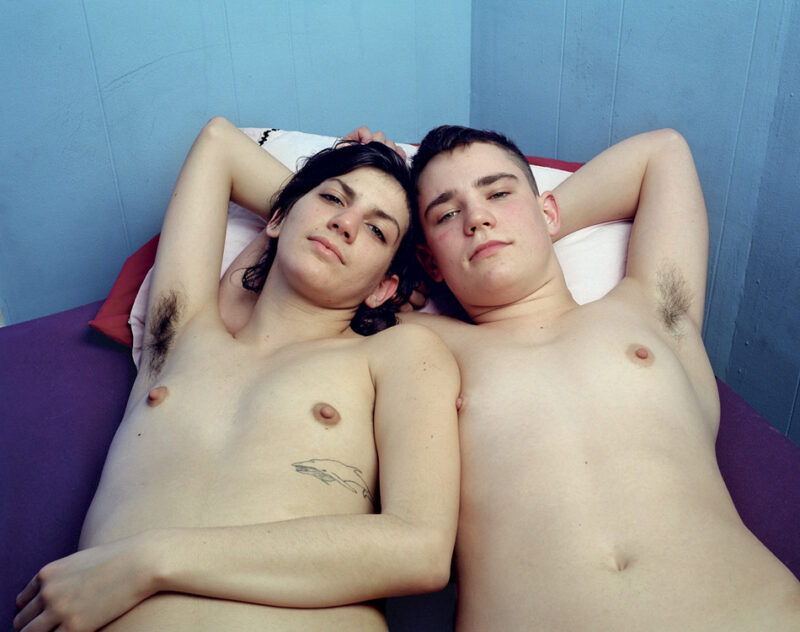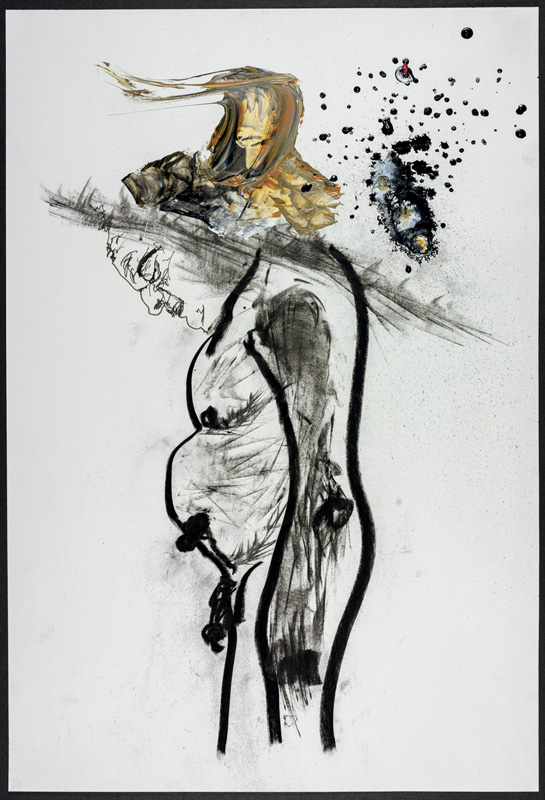La Castiglione, Montreal
April 3–May 11, 2019
By James D. Campbell
Intimate Portraits brought together works by four artists whose preoccupation with the human body is a longstanding one: Donigan Cumming, JJ Levine, George Steeves, and Andrea Szilasi. Their works interrogate the nature of portraiture itself. What constitutes a truly intimate image? Where is the line drawn between a depiction of the body as such, with all its scar tissue and signs of attrition on display, and a still more extreme summoning: transgressive, death-bound, achingly finite? The body harrowed by disease, dolour, self-doubt . . . All of the participating artists crossed that line in pursuit of truth. The body here is a body in fragments; a tremulous private body in a state of perennial dismemberment.
The exhibition included several works by the brilliant photographic artist Andrea Szilasi that constituted a sort of mini-retrospective. These works all speak in thematic unison of the body as a problematizing target zone for interrogation and appraisal, and the endoskeleton for psychological states grafted on with unerring precision.
Szilasi is a true radical, and her work dismantles the body with an abandon bordering on the sublime. Hers is an episodic subversion of extant norms. The multiplication and mirroring of corporeal parts manifests a surreal and compelling thought space in which a proverbial Alice hurtles down the rabbit hole into a maze of alternate realities – and we follow helplessly in her wake. Szilasi’s signature use of collage and sundry optical ploys allows her to present the body as a work of embodiment in process and its apotheosis.
In Skull Mirror (2015), Szilasi offers an Alice moment in which the viewer is catapulted through two co-given surfaces. The horizontal surface is at the level of the photographic surface itself, the mirror before and below us. The vertical surface extends through to the other side of the mirror. The repeating image of the skull leads us into a dense underworld of images and then leads us up through the surface of the water to something like salvation. The ebb and flow of life is meaningfully reprised here.
Szilasi treats the body in terms of how it is lived and how it is thought, and how it can be imagined and rethought. There is a conceptual element at play here that is distinct from formalism but no less interesting or self-present. As for the Hamlet at the graveside “Alas, poor Yorick!” moment – the dilation on mortality – it is highly resonant for all her work to date. The handling of the human skull is mirrored and, if you will, profoundly Janus-faced, situated somewhere between anthropology, history painting, and the spectral. Her exotic representations of the human body can raise the hairs on the nape of your neck with instantaneity.
Donigan Cumming presents two series – one of photographs and the other of drawings – that treat states of memory, loss, and affection with equal drama and insight. The artist’s relentless and captivating take on the ageing male body pulls no punches. Performed by three men who have appeared in his previous series, and set in an improvised studio, Cumming’s images stake an inexorable claim on the viewer, who cannot look away.
I had not experienced Cumming’s drawings before, and they are a revelation. Based on his photographs of the same men – Albert, Geoff, and Gerry – they register a dark, transgressive power: the power of images to inflect and change the condition of being here – of being in the world. The men in question are all now dead. Cumming’s is an art of resurrection and memorialization. The flesh crackles and sizzles with a fire that resists being extinguished even when all the oxygen has been evacuated from the room.
JJ Levine’s hugely candid photographs explore issues of gender and self-identity with brio. An artist who possesses an enviably finessed compositional aesthetic – the photographic spaces here have a declarative ethos and felt singularity – Levine interrogates and upends traditional roles associated with gender identity and sexuality by dilating on his relationships with those closest to him.
Such is the clarity of this work that it never runs the risk of devolving into mere sensationalism or excess. Levine is an activist and truth teller. In a sense, all his subjects are surrogates for himself – and for his own bodily reality in the world. His intimate portraits bring his own truth and desire into the foreground.
George Steeves’s photographs explore with no-holds-barred intensity the bodies of his significant others: wives, lovers, girlfriends, mostly captured in extremis. These intimate portraits are disinterred from the artist’s archives and reworked by the application of paint directly on the photographs. This manoeuvre reminds us of Arnulf Rainer’s overpainted photographs. Steeves’s activation regime does not reach the threshold of frenzy but is highly effective nonetheless.
The works exhibited here were inspired by his wife Ingrid’s terminal illness. She asked him to document her battle with colon cancer, and the resulting images are the fundament of a palimpsest both harrowing and enlivening in scope and tenor. The authentic image, for Steeves, is redolent of charged biographical/corporeal meaning amplified by the matter of paint. The paint lifts the images that it coats out of a secret state into one of heightened visibility, laying bare the travails of the tremulous private body and its hidden canons of beauty, even when offering an affecting profile of death-bound subjectivity.
The maverick works exhibited here dilated on corporeal intimacy and exotica with all the integrity and terrifying acuity of a latter-day Titus Andronicus.
—
James D. Campbell is a writer and curator who writes frequently on photography and painting from his base in Montreal.
[ Complete issue, in print and digital version, available here: Ciel variable 113 – TRANS-IDENTITIES ]
[ Individual article in digital version available here: Intimate Portraits — James D. Campbell ]





